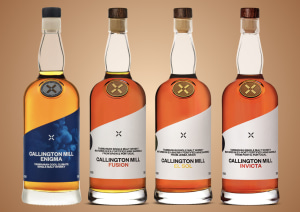Digital inkjet is fast finding favour as a printing technology for the growing sustainable fibre-based packaging sector. Jamie Weller, business development director at Kissel + Wolf Australia, tells PKN why.
Consumer awareness of sustainable packaging is at an all-time high. With the media spotlight on plastic waste there’s a strong push for alternatives to single-use plastic and consumers expect brands to satisfy this demand.
“This is great news for fibre-based packaging and opens up many opportunities for brand owners,” says Jamie Weller, business development director ANZ – Industrial Print & Packaging, noting that for converters, however, sustainability takes on a different meaning.
“Converters have to ask, ‘How do I remain relevant, profitable and respond to today’s increasing customer demands? How do I manage increased production orders and cope with shorter runs?’,” he says.
For Kissel + Wolf, a leading equipment and consumables supplier to the printing and packaging industry for over 30 years, developing a sustainable future for all stakeholders can only be accomplished by investing in new technology.
“The manufacturing and production processes need to have the tools, control processes and the right level of automation,” Weller says.
“During uncertainty and disruption of the supply chain, having agile production is key to staying competitive in an ever-changing environment, keeping customers loyal and protecting your bottom line.”
INDUSTRIAL INKJET
When it comes to printing on fibre-based packaging, Weller is of the opinion that digital inkjet is the way forward.
“There are many benefits of digital inkjet printing such as flexibility in supply chain, just in time production, speed to market, managing increased numbers of SKUs, and sustainable manufacturing,” he says.
Weller points out that with digital inkjet there is no need for plates, no chemicals involved, zero waste, and job changeovers are super-fast. In addition, he says, digital inkjet printing solutions do not touch the surface of the substrate, saving material cost and providing more benefits downstream when converting the printed board.
“Another important consideration is the connectivity with Industry 4.0. Allowing your physical production and operations to be connected to machine learning and smart technology, helps to improve your operations and supply chain management,” Weller adds.
BRAND ENGAGEMENT
Brand owners and packaging designers are increasingly using the power of storytelling to better engage with consumers and make their product stand out on shelf.
“With digital inkjet printing solutions, personalisation, versioning, QR tracking and augmented reality (AR) for consumer engagement are all possible,” Weller says.
“In addition, major brands and marketers need to consider how to best use all of the real-estate available on the packaging, to connect to their target audience.”
Weller says that digital inkjet technologies for the folding carton and corrugated market is a rapidly growing segment, and he says Kissel + Wolf is well positioned to offer best-in-class industrial inkjet printing solutions, including workflow, ranging from high value applications to digital mainstream production.
“Our product portfolio of industrial inkjet solutions offers printing on folding carton and corrugated board, from basic to premium boxes on white, kraft and coated board, from short to medium run length, up to conventional production with digital flexibility.”
This article has been published in the September-October print issue of PKN Packaging News, on page 58.






